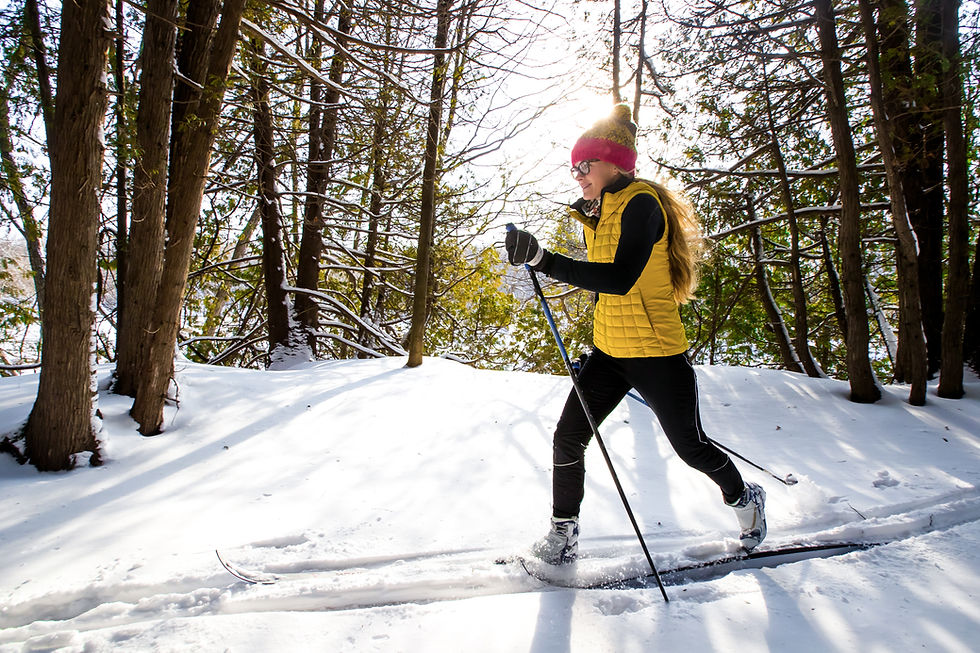Advantages and Tips to Stay Active in Cold Weather
- AdvantageHealth

- Dec 9, 2021
- 2 min read
Written by: Makensie Kincade, Allianz Fitness Center | AdvantageHealth

With winter nipping at our heels (literally), it can be challenging to find activities outdoors. Other than being cold, there is no limitation or shortage of training to be done outside. Skiing, skating, snowboarding, sledding, or simply taking a quick jog outside are all types of exercises to do during the winter.
A study in the Journal of Clinical Endocrinology & Metabolism states that you can burn more calories in colder weather. This is because the body needs to work harder to perform in the harsher climate to generate enough heat to keep the body warm. When the body is exposed to a change in temperature or intensity, the need for energy increases. For energy, our body breaks down glycogen (a form of carbohydrates) in the muscle. Carbohydrates are the body’s primary fuel source for energy, and it is important to optimize nutrient intake before, during, and after you work out. Good carbohydrate sources to bring on the go include bananas, a snack pack of trail mix, and Gatorade.
Hydration while exercising in cold weather is just as important as when in heat. Cold diminishes thirst by 40 percent. When you’re cold, your blood vessels constrict to extremities, allowing more blood flow to major organs. This process can lead to the secretion of arginine vasopressin (fluid regulating hormone), leading to a decline in thirst. A good rule to follow is drinking at least 16 ounces of water for every hour of physical activity.
Lastly, Beware of hypothermia and frostbite. Hypothermia happens when the body drops below 95 degrees. Prepare yourself for outdoor activities by wearing layers of clothing and checking the temperature outside (also consider wind chill). Frostbite can cause permanent damage to the skin, nerves, and tissue at the site of injury. Signs of frostbite include numbness, clumsiness, and discolored skin. The most vulnerable areas on the body are extremities such as feet, hands, and nose. Frostbite can occur very rapidly, depending on how cold it is outside. Protect those extremities by wearing gloves, boots with warm socks, hats, or face masks.
It is no doubt that it can be challenging to be out in the cold, let alone exercise in such conditions. But with the cold climate, it can be even more rewarding to exercise in cold weather.
References:
https://www.froedtert.com/stories/how-cold-weather-affects-body-during-exercise https://www.mayoclinic.org/healthy-lifestyle/fitness/in-depth/fitness/art-20045626
Study Link:
Since 2001, Minnesota-based AdvantageHealth has been delivering award-winning employee wellbeing programs and fitness center design & management throughout the U.S.









Comments